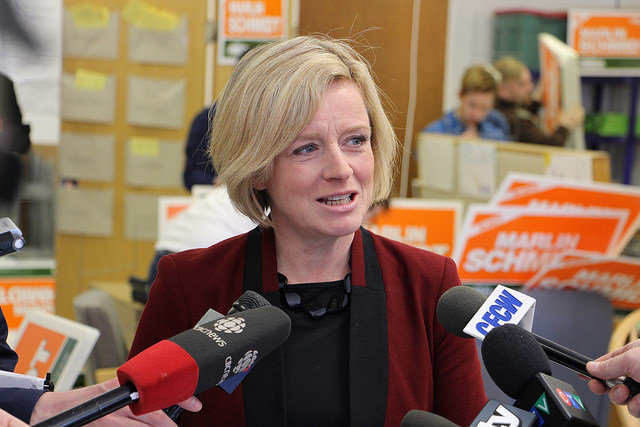Do U.S. Election Financing Laws Force Politicians to Ignore Limits to Growth?
by Brent Blackwelder
 This fall, huge election campaign spending to influence the outcome of U.S. Congressional races, gubernatorial races, and state legislative races exceeded $3 billion.
This fall, huge election campaign spending to influence the outcome of U.S. Congressional races, gubernatorial races, and state legislative races exceeded $3 billion.
Money in politics has stopped progress toward real economic reform and slowed efforts to move to a true-cost, sustainable, steady state economy. It will continue to do so unless people seeking to end today’s cheater economics, with its global casino-style economy, join in the ongoing efforts to change the election financing laws.
Recent decisions by the Supreme Court have made a bad situation much worse. In Citizens United v. FEC, (2010) the Court ruled that it was unconstitutional (a violation of First Amendment-protected free speech) for the government to restrict political spending by corporations. While there are limits on what individuals and corporations may give directly to candidates, there is no limit on corporate contributions to independent political spending to benefit or to smear candidates. The massive floodgates of electoral spending have been opened wide for industries, and today’s electoral spending in the United States amounts to a system of legalized bribery.
Billionaire brothers David and Charles Koch assembled a secretive network of wealthy political donors set to spend about $300 million in the Congressional races in 2014, which is approximately the total spent by Bush and Kerry in the 2004 presidential race. By early September, a full two months before Election Day, Koch-funded groups already had paid for about 44,000 ads in U.S. Senate battleground races. That means approximately one out of every ten TV ads aired in those states had Koch fingerprints.
But fortunately, several dozen organizations are fighting back. For example, Common Cause, United Steelworkers, Sierra Club, United Autoworkers, and other national groups have already had success with a big effort to reverse the Supreme Court’s decisions in Citizens United v. FEC, (2010) and McCutcheon v. FEC (2014). These efforts involve supporting a constitutional amendment permitting Congress and the states to set reasonable limits on political spending. Leadership of these groups has been instrumental in the passage of ballot measures and legislative resolutions in 16 states and about 500 localities, calling on Congress to pass a Constitutional amendment and send it to the states for ratification. These jurisdictions are home to more than 120 million Americans, which is more than one-third of the U.S. population.
Why would cleaner elections matter for achieving a true-cost, steady state economy? The large volume of money that Wall Street puts into elections effectively stymies efforts to reform the U.S. Tax Code. Tax codes around the world tend to subsidize pollution, tolerate externalization of costs, and penalize recycling while rewarding extraction of natural resources and exempting poisons from sales taxes. The United States is not alone among nations providing generous subsidies to polluters: globally, $1.5 billion is provided by governments to fossil fuel industries.
There are many other ways in which corporate money in elections can subvert democracy and block paths to a true-cost economy. Having lobbied Congress for over 40 years, I have seen how the huge amounts of fossil fuel money for politicians have made a lot of Members “climate deniers.”

Hundreds of Chevron’s abandoned open toxic pits remain in Ecuador. Photo Credit: Caroline Bennett-Rainforest Action Network
But it happens in category after category. For instance, as early as the 1990s, I saw the huge influence of corporate money enabling the passage of so-called free trade agreements. Many trade agreements contain a dispute settlement mechanism that allows corporations to sue a government. Such a challenge is not heard in the normal court system of a nation but rather in a secret, three-person tribunal. Currently, a Canadian mining company is suing the government of Costa Rica for $1 billion for denying a permit to mine copper and gold in a tropical rainforest. Costa Rica wants to conserve its rainforests because eco-tourism is a key part of their economy. Chevron has used the secret tribunal process to avoid payment of damages for persistent, serious oil spills in Ecuador.
Another example can be seen in ballot measures such as Proposition 92 in Oregon, which would require labeling of genetically engineered foods. This measure was opposed by major transnational corporations such as DuPont, Coke, and Monsanto, and their war chest was estimated at $25 million. When people use ballot measures to deal with legislatures that refuse to act on issues of public health and environmental protection, industries pour out millions in propaganda to defeat such measures.
In poll after poll, voters say that they care about clean air, clean water, and the environment, but the reality is that it is harder today than at any time in the last 40 years to pass significant legislation to safeguard air, land, and water. The problem has grown much worse since the 1970s, when 30 major environmental laws were passed, and a big part of the problem is the cost of elections.
Twenty-five years ago, I was one of about a dozen environmental leaders called to a U.S. Senator’s office to hear a sobering message about what the staggering costs of elections were doing to Members who were not independently wealthy. He said to us:
To be reelected, this means my having to raise $10,000 every day on average until election day. For you it means two things: 1) I have little time to study issues and legislation and 2) while I may vote with you from time to time, I cannot champion any legislation that would prevent me from getting campaign contributions from major industrial interests.
As recording setting amounts have just been set in the 2014 elections, the need for election financing reform is paramount if we are to prevent these major industrial interests from keeping us on the path of cheater economics.








Don’t expect the U.S. Supreme Court to agree, but ignoring limits to growth may be against the law — Title 33 U.S. Code §701a – Declaration of policy of the Flood Control Act of 1936 to be exact. That interpretation may not jump out at you from the wording of the law, but here is the key phrase: “…if the benefits to whomsoever they may accrue are in excess of the estimated costs, and if the lives and social security of people are otherwise adversely affected.”
It takes a heap of historical context to understand how that clause relates to “limits to growth.” First, the background to the legislation was what could be termed the “compensatory principle of public works spending.” Basically, the idea was to remedy the employment fluctuations of the business cycle by planning for more public works spending during slack periods and less in booms. The “Keynesian multiplier” was instituted in the introduction of Benefit-Cost Analysis during the New Deal.
Conservative reforms to Cost-Benefit Analysis (with the emphasis now on costs rather than benefits) limited counting the “secondary benefits” of economic stabilization in project plans and reverted to more orthodox economic principles such as opportunity costs and market-based discount rates.
Curiously, though, the wholesale reversion to market prices as the measure of costs ignored J. Maurice Clark’s critique of overhead cost-shifting that was at the foundation of the original Benefit-Cost Analysis. Clark had been the economic consultant to the National Resources Planning Board. Clark’s analysis of cost-shifting was also the inspiration for K. William Kapp’s analysis of environmental disruption as cited by Martinez-Alier in the observation that “from a business point of view, externalities are not so much market failures as cost-shifting successes.”
To make a long story short, today’s Integrated Assessment Models, such as those used by the Interagency Working Group to set the Social Cost of Carbon assume a rate of economic growth instead of actually evaluating “the benefits, to whomsoever they occur.” That rate of growth is a bad surrogate for induced employment effects. In fact, employment is becoming increasingly decoupled from GDP growth as the latter becomes increasingly financialized.
I’ve outlined the history of the mutation of Benefit-Cost/Cost-Benefit Analysis in the blog post, “Public Works, Economic Stabilization and Cost-Benefit Sophistry” http://econospeak.blogspot.com/2014/11/public-works-economic-stabilization-and.html
It’s a complicated story but I think once people grasp the basic idea behind cost-shifting and its role in the history of cost-benefit analysis they will better comprehend the sophistry and hypocrisy of the growth imperative.